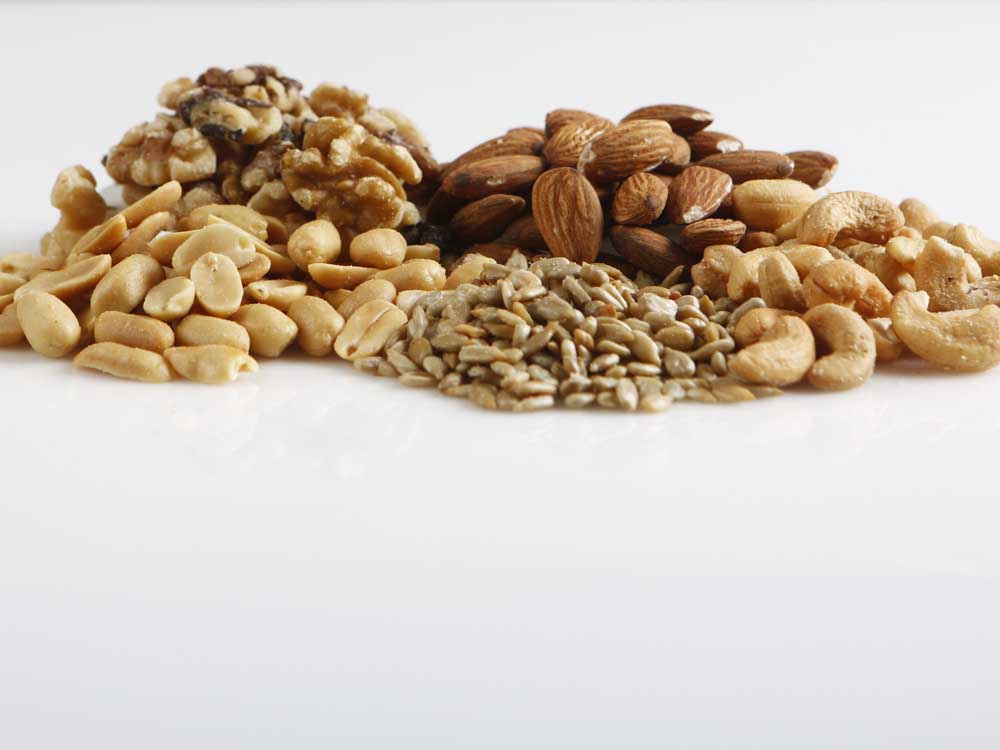Go nuts, try a different butter
Published 12:00 am Monday, November 14, 2016

- Jarod Opperman / The Bulletin
For decades there was nothing more fundamental to growing up in America than a good old-fashioned peanut butter and jelly sandwich, preferably with the crusts cut off. But in recent years, jars of Skippy and Jif have been joined on grocery shelves by an ever-increasing array of nut and seed butters.
The good news, according to Annie Baumann, a registered dietitian with Bend Memorial Clinic, is most nut butters are fairly similar in nutritional makeup and taken in moderation, are a great component of a healthy diet.
Trending
“Nut butters can really be a benefit for a lot of people,” she said. “And most people like them, which is always a bonus.”
Nuts are a great source of heart-healthy fats — monounsaturated and polyunsaturated fats — something you don’t typically get from spreads like butter, margarine, jellies or jams.
Current nutritional guidelines call for about 30 percent of daily calories to come from fats, with less than 10 percent coming from the less healthy saturated fats.
“Cashews, brazil nuts, macadamia nuts — they all have a little more saturated fat in them versus almond, walnuts, peanuts, and so you wouldn’t want to make them your go-to nut butter, but you can still work them in,” Baumann said.
Which butter is best? That’s a tough nut to crack.
“It really doesn’t make a difference,” she said. “Pick your nut. They’re all pretty much the same.”
Trending
Peanut butter
Stick to natural versions made of peanuts and salt and little else. Avoid the major brands that add sugar or corn syrup, as well as trans fats in the form of partially hydrogenated oils, to keep the oil from separating. Products can have up to 0.5 grams of artery-clogging trans fat in them and still round down the trans fat content to 0 grams on the nutritional label.
Don’t bother with a low-fat peanut butter, Baumann said. You don’t want to lose the heart-healthy fats. Peanut butter also contains more protein than most of the other nut butters.
Almond butter
Almond butter has gained in popularity among those with peanut allergies or those with high cholesterol. High in vitamin E, almond butter has more fiber and less saturated fat than other nut butters. That also keeps its calorie count low.
Sunflower seed butter
Butter made from sunflower seeds is another popular alternative to peanut butter for kids with nut allergies. It’s not as sweet as almond or cashew butters, and has half the calories and saturated fat of peanut butter.
Sesame tahini
A seed butter made from lightly toasted, hulled sesame seeds, it’s high in unsaturated fat and a good source of magnesium and iron. Crushing and grinding the seeds into a butter also helps the body absorb nutrients otherwise protected by the seed’s hard outer shell.
Cashew butter
One of the creamiest nut butters, it’s often used as a dairy substitute in recipes. While low in calories and saturated fat, it also tends to be one of the more expensive nut butters.
Walnut butter
Harder to find in grocery stores, walnut butter is rich in heart-healthy omega-3 fatty acids that also have an anti-inflammatory effect. It’s sometimes mixed with other nuts, and can be easily made at home.
Now about those chocolatey, hazelnut spreads, Baumann said don’t bother.
“Nutella is really just sugar, it’s not hazelnut,” she said. “That would be a special dessert.” •








